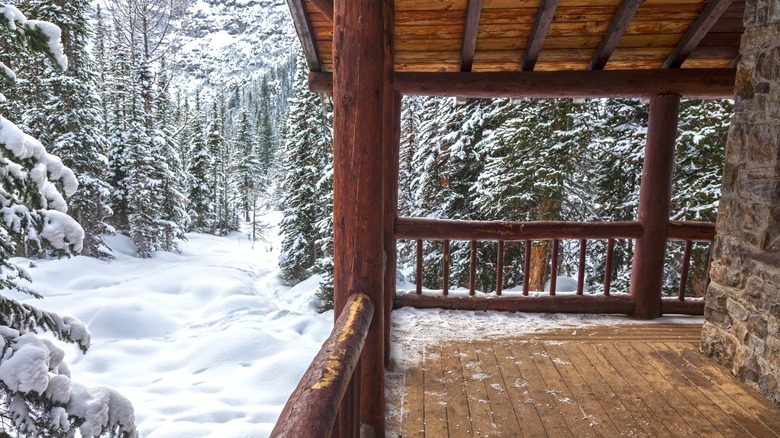What You Should Monitor When Storing Perishable Food Outdoors This Winter
Amidst the plethora of food misconceptions about there, the rules about what you can and can't refrigerate may seem like a perplexing mess. For example, many people refrigerate butter, but according to the United States Department of Agriculture (USDA), butter can be safely stored on the counter. However, they note that the flavor can change after a few days, so you may want to keep it in the fridge for the sake of the taste. A similar concept applies to Frank's RedHot Sauce. While most people store opened bottles in the fridge, Frank's notes that refrigeration is only necessary to maintain flavor, as the condiment is safe until its expiration date if left out.
So what foods do need to be refrigerated? The obvious ones include meat, fish, and dairy products like milk: According to State Food Safety, these foods are the most likely to grow bacteria if left out for too long. However, the Food Network notes that sliced tomatoes, pie, and jelly are among the foods that must go in the fridge.
When the seasons change and the weather turns frigid, it may be tempting to free up some room in your fridge and keep perishable foods outside. After all, if you have to wear a coat, beanie, and gloves to go outside, shouldn't it be cold enough to keep your food safe? Although there is some truth to this theory, be sure to pay attention to these guidelines when storing food outside.
Make sure outside conditions are sanitary and below 40 degrees Fahrenheit
First of all, it's imperative to make sure the temperature outside is 40 degrees Fahrenheit or lower when storing perishable foods outside. According to the USDA, the danger zone for pathogenic bacteria growth (which causes foodborne illness) on food is between 40 and 140 degrees Fahrenheit. Your porch may be covered with snow, but if the temperature warms up past 40 degrees Fahrenheit at any point in the day, it's no longer safe to keep food out there. PennState Extension further notes that food left out in the sun may not experience the same temperature as the shade, which can make it can be difficult to tell the exact difference.
In addition, delicious items on the porch may attract not-so-friendly neighborhood creatures, Michigan State University warns. Besides creating a health concern if they touch your food and potentially pass on diseases, you may find that your meticulously prepared meal just became a raccoon's Christmas dinner. And according to PennState, leaving food outside can lead to additional health risks if placed on an unsanitary surface.
So while it might not sound like a big deal to use your front porch snow as nature's ice bucket, it may be more trouble than it's worth to leave food outside. But if you're determined to try it out, make sure to keep these factors in mind.

